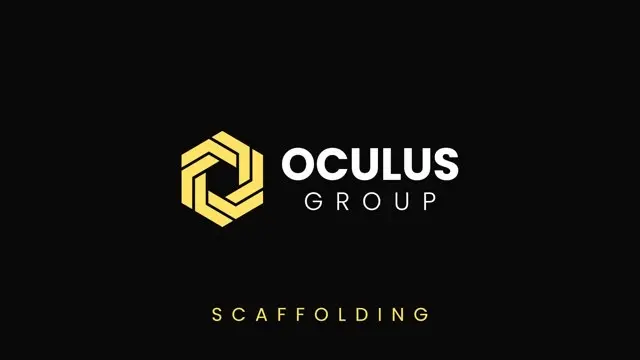Types of Scaffolding: Which One Is Right for Your Project?
Scaffolding is essential in the construction and building maintenance industry. Providing temporary, secure platforms for workers to perform tasks at height safely. To carry out the various tasks involved in constructing and maintenance, multiple types of scaffolding and access platforms are required to overcome different environmental challenges. Whether it’s a small residential project or a large scale commercial build, choosing the correct scaffolding is essential. Selecting the wrong types of scaffolding for the task can effect safety, efficiency and cost effectiveness of the job. With various types of scaffolding available, it can be difficult to know which option is best for your needs.
In this post, we’ll explore the different types of scaffolding, how they compare, and which scaffold is correct for your project.
1. Single Scaffolding (Bricklayer’s Scaffolding)
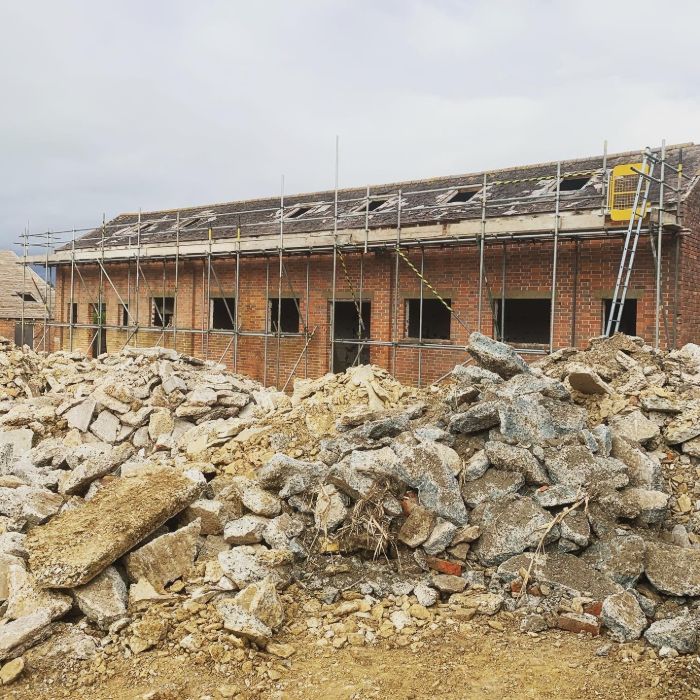
One of the simplest and oldest types of scaffolding is single scaffolding. Typically used for brick masonry work, repair and renovation works, this structure consists of vertical standards fixed into the ground with horizontal ledgers connected to the verticals at the appropriate heights. Perpendicular to the building wall, putlogs are placed to provide support and structure. Scaffolding boards are laid for works to access.
Applications:
- Best For: Bricklaying, small-scale residential construction, and low-rise buildings.
- Pros:
- Easy to erect and dismantle.
- Cost-effective for small projects.
- Cons:
- Limited in height and load-bearing capacity.
2. Double Scaffolding (Mason’s Scaffolding)
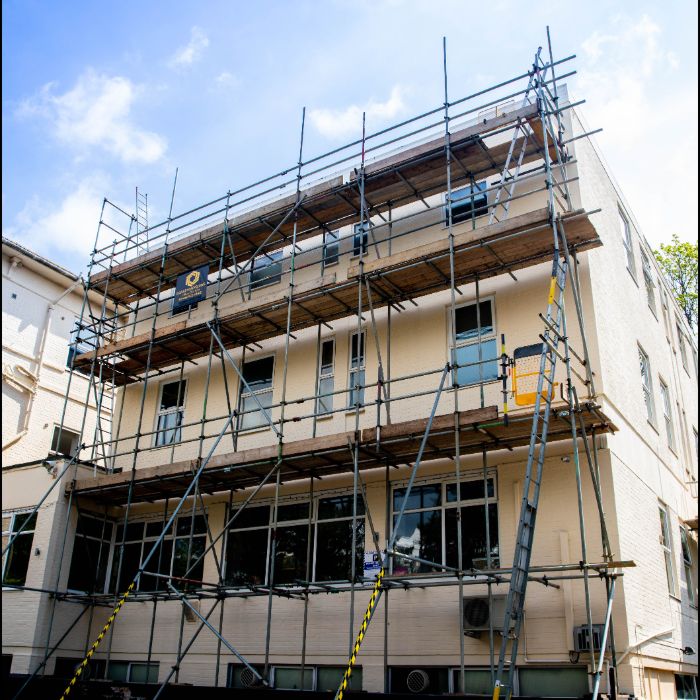
A more robust style of scaffolding is “double scaffolding”, which is primarily used for new builds and larger constructions. Unlike single scaffolding, double scaffolding uses two rows of vertical standards to provide additional strengthening and support. The inner standards are placed close to the wall, while the outer row is placed at some distance from the wall to ensure structural stability. Double scaffolding can withstand strong winds and harsh weather along with heavier working loads from materials and workers.
Applications:
- Best For: New builds, large constructions, bridges.
- Pros:
- Extra stability for hard surfaces like stone walls.
- Ideal for projects where wall penetration is not feasible.
- Cons:
- More material-intensive than single scaffolding, making it slightly more expensive and labour intensive.
3. Cantilever Scaffolding
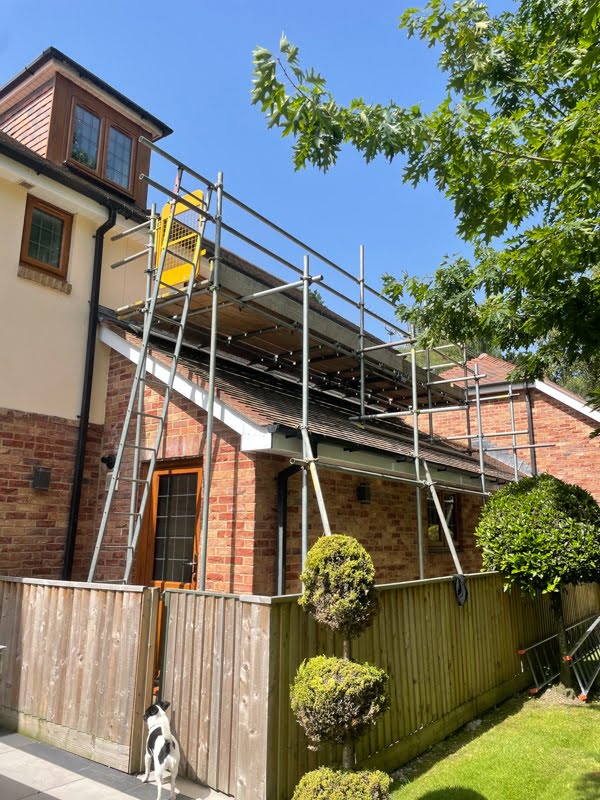
Where ground is uneven or unable to support traditional scaffolding, cantilever scaffolding is usually the most appropriate type of scaffolding. The structure is supported by needles, which are horizontals that are supported by the building itself. This type of scaffolding extends outwards from the building.
Applications:
- Best For: High-rise buildings, construction over roads, or where ground space is limited such as busy high streets.
- Pros:
- Requires minimal ground space.
- Allows unobstructed movement below the scaffolding.
- Cons:
- Requires expert installation to ensure safety.
- More expensive than traditional scaffolding.
4. Suspended Scaffolding
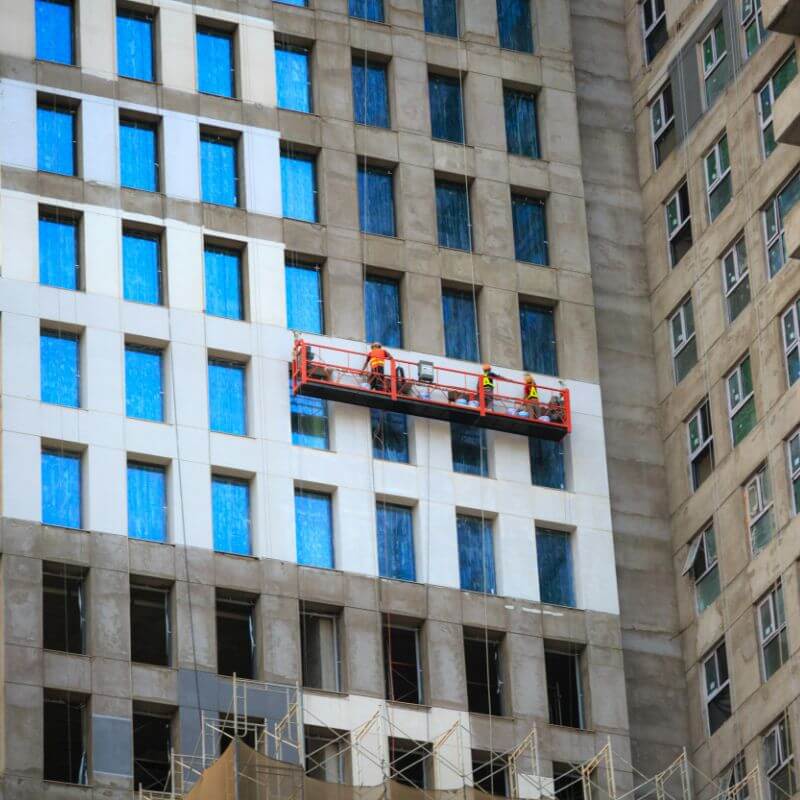
Suspended scaffolding is a platform style scaffold suspended from the roof or other overhead support systems by ropes or chains. The platform can be raised or lowered depending on the height the operators need to work at. This level of adjustability makes it perfect for maintenance, cleaning and exterior repair on high rise buildings.
Applications:
- Best For: Window cleaning, façade repair, painting high-rise buildings.
- Pros:
- Highly adjustable, perfect for tall buildings.
- Saves space on the ground.
- Cons:
- Limited in terms of load-bearing capacity.
- Requires special safety measures to prevent accidents.
5. Trestle Scaffolding
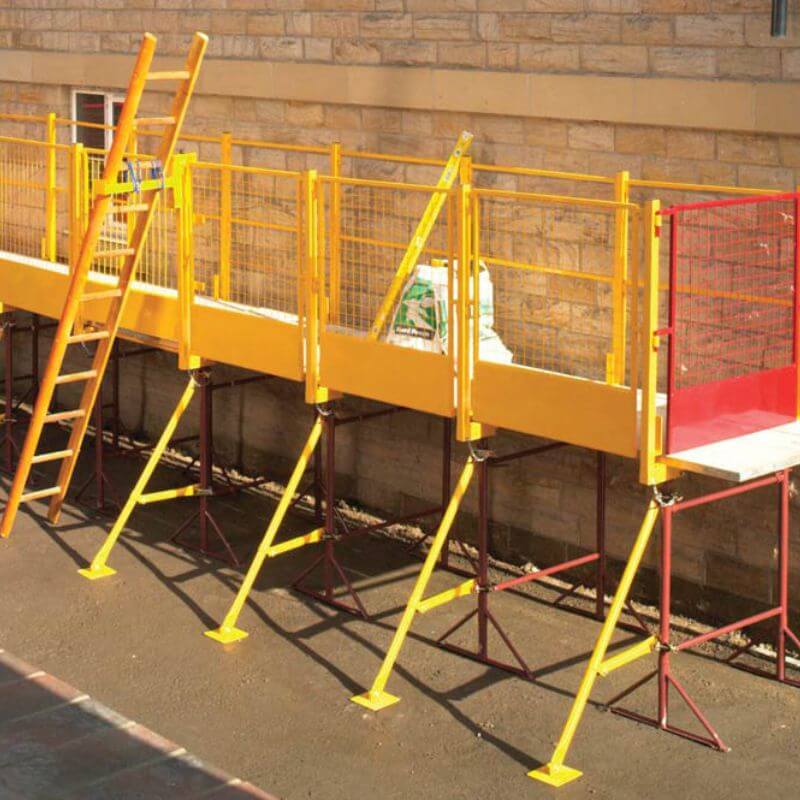
Trestle scaffolding is another platform scaffold and most commonly mounted on moveable tripods or ladders. It is commonly used by painters, plasterers and electricians working inside on low level projects. This type of scaffolding or platform is not for high level work. Ensuring all workers are trained to use and assemble trestle scaffolding is essential.
Applications:
- Best For: Indoor work, painting, and light repairs.
- Pros:
- Easily portable and quick to assemble.
- Perfect for low-height projects (up to 5m).
- Cons:
- Not suitable for outdoor or high-rise projects.
- Requires training for proper installation
Types Of Scaffolding Comparison Table
To help you choose the best scaffolding for your project, here’s a quick comparison of the main types of scaffolding discussed:
| Type | Best For | Pros | Cons |
| Single Scaffolding | Small-scale projects, bricklaying | Cost-effective, easy to set up | Limited height and load capacity |
| Double Scaffolding | New builds, larger constructions | Added stability, suitable for stone walls | Higher cost, more materials needed |
| Cantilever Scaffolding | Projects with limited ground space | Minimal ground space required | Complex installation, more expensive |
| Suspended Scaffolding | High-rise, exterior work | Adjustable height, space-saving | Limited load capacity, requires safety measures |
| Trestle Scaffolding | Indoor low-height work | Portable, easy to assemble | Not suitable for high-rise or outdoor projects |
Which Type of Scaffolding is Right for Your Project?
By now, you should have an understanding of the different types of scaffolding and which might be best for your project. It all depends on various factors, including the project’s height, load-bearing requirements, and site conditions.
Small projects often benefit from single or trestle scaffolding, while larger and more complex builds may require double scaffolding. For dynamic, high-rise projects, suspended scaffolding offers flexibility, and for areas where ground space is uneven or inaccessible, cantilever might be best.
By understanding the different types of scaffolding options available, you can make informed decisions that enhance safety, efficiency, and productivity on your construction site.
It is always important to select a professional, company to carry out your scaffolding requirements ensuring they follow all HSE scaffold requirements. Oculus Group offer all types of scaffolding for different project sizes and requirements. Our friendly and fully trained team of professionals are here to provide you with all the necessary information and advice to get your project safely underway. Contact us today for a discussion about which type of scaffolding you require.
Call us on 07467521692
